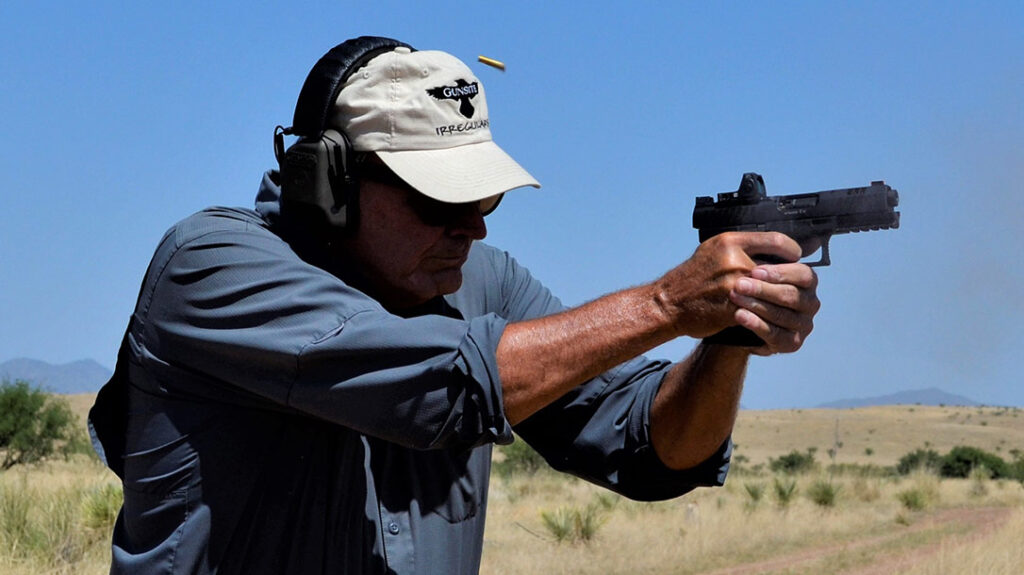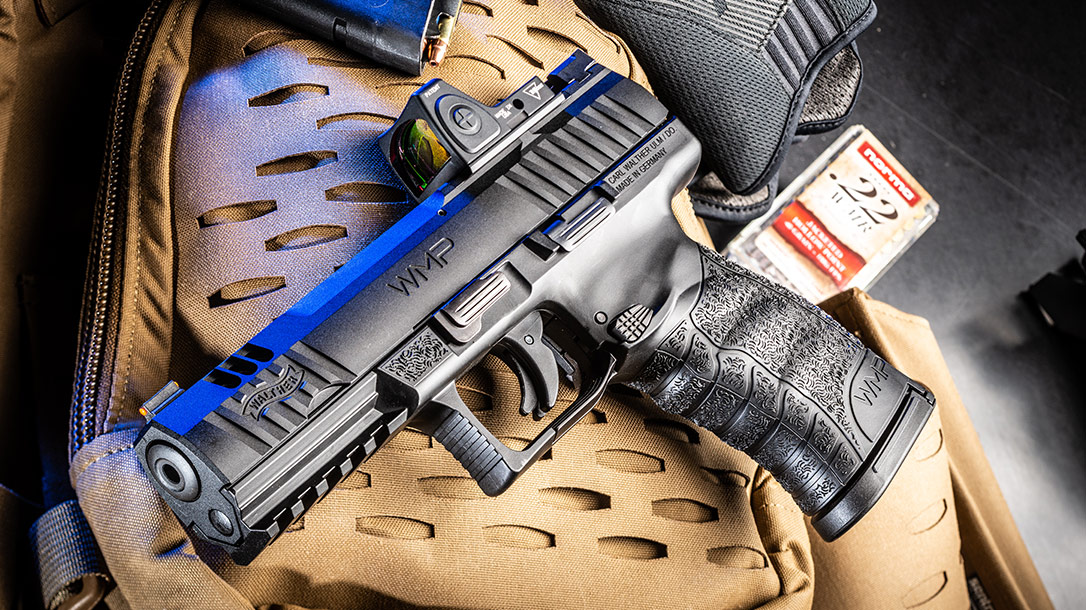In May of 2022, Walther Arms introduced the WMP—a semi-auto pistol chambered for the .22 Winchester Magnum Rimfire (WMR). It has a healthy capacity of 15+1 and the type of accuracy and reliability we’ve come to expect from Walther. In addition, it features an optic cut, ready to accept the Trijicon RMR footprint.
The Walther Arms WMP .22 WMR
Its lineage is undeniable, with clean, uncluttered lines—very much resembling those of Walther’s immensely popular PPQ line of pistols. That might be where the similarity ends, though. Specifically, a significant number of design changes were required for the gun to function with .22 WMR rimfire ammunition.
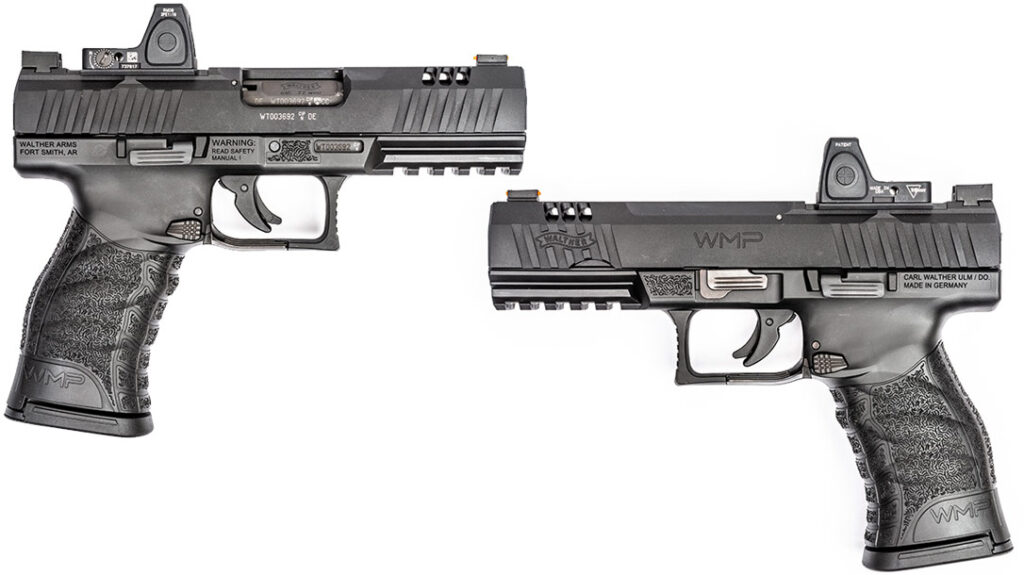
Advertisement — Continue Reading Below
Problem-Solving with the WMP
Over the years, we have seen numerous manufacturers attempt to market semi-auto pistols chambered for the .22 WMR cartridge. For a number of reasons, they have been dropped from production. The cartridge is powerful enough that a simple blowback action won’t work. Likewise, traditional locking systems, like Browning’s tilting barrel lock-up, require more power than the WMR possesses to work properly.
Walther engineers came up with what I think is a brilliant solution. It is what I call a retarded blowback system. The WMP uses an aluminum slide with a steel insert that contains the firing pin, firing pin block safety, extractor, and breech face.
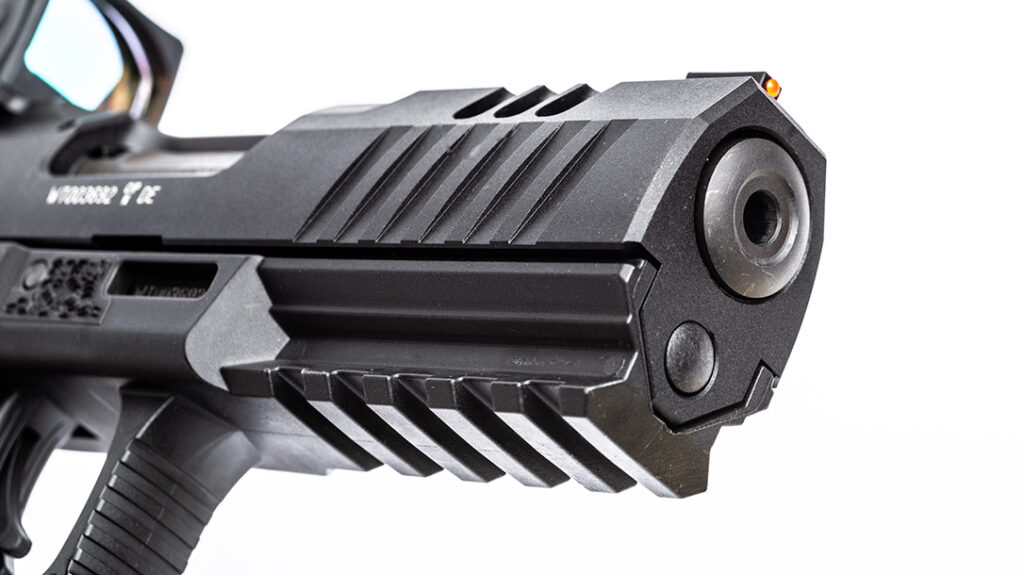
Advertisement — Continue Reading Below
To slow the blowback of the empty cartridge, Walther engineers fluted the WMP’s chamber. This gives the empty brass the chance to expand into the flutes and slow the rearward velocity of the slide. The recoil spring is not very heavy, and little effort is required to hand cycle the WMP’s slide.
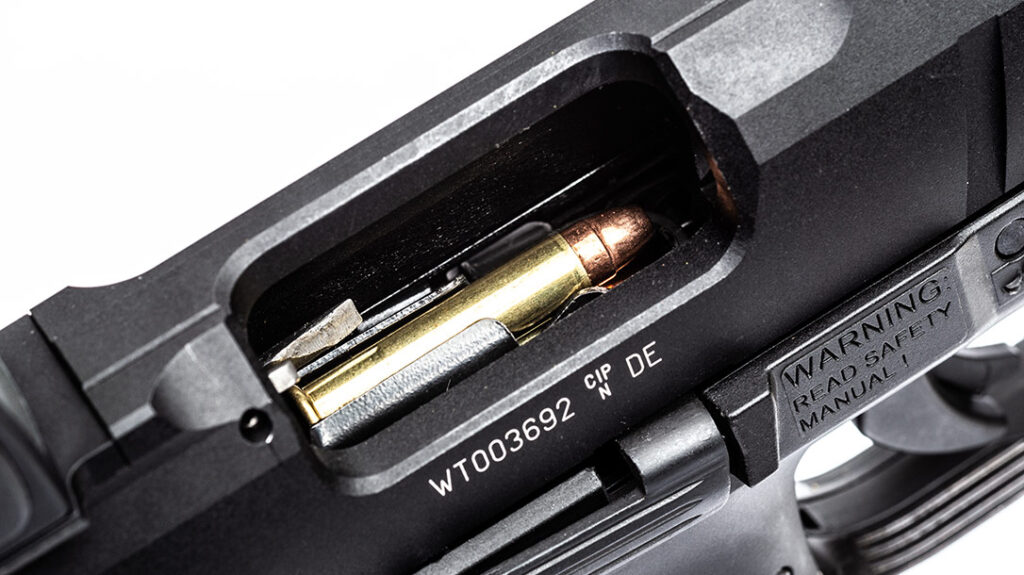
The WMP Rimfire Solution
Rimfire cartridges require a significant impact on the rim to ignite the cartridge. I am doubtful that a striker-fired gun has been produced that could deliver that blow. In the case of the WMP, Walther’s design team decided to make the gun hammer fired.
Advertisement — Continue Reading Below
Despite its resemblance to the PPQ family, the WMP uses a double-action-only (DAO) trigger and a hammer to strike the firing pin. This DAO trigger is unlike anything I’ve fired before. It gives the shooter the feeling of a striker-fired trigger with its short travel and quick reset. My test sample’s trigger broke at a light and crisp 3.25 pounds.
Unlike the PPQ family of guns, the WMP does not come with interchangeable backstraps. However, the polymer frame is textured with Walther’s signature grip-enhancing treatment.
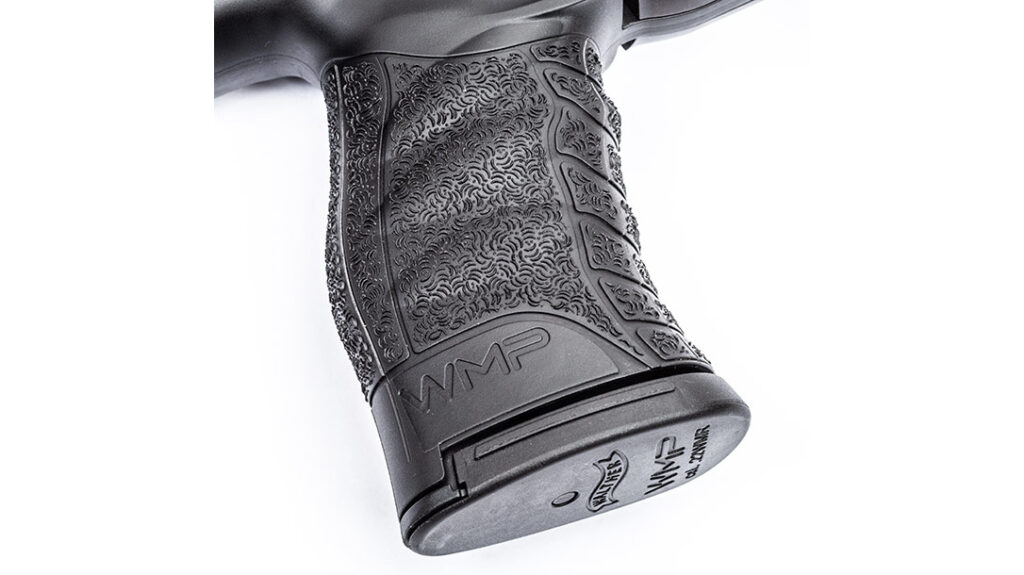
Advertisement — Continue Reading Below
The gun uses both a button-style mag release as well as the triggerguard lever release. Both magazine releases are bilateral, and either method works equally well. Walther also equips the WMP with an ambidextrous slide lock in order to make the gun as southpaw-friendly as possible.
In fact, the only external appendage that is not ambidextrous is the disassembly lever located on the port side of the frame.
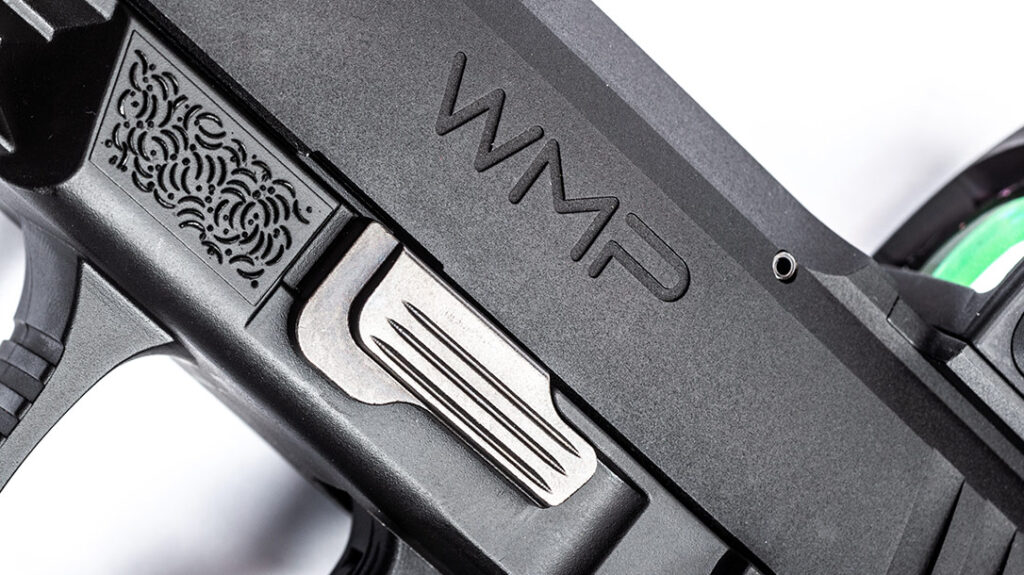
Advertisement — Continue Reading Below
To The Range
Handgun optics are becoming increasingly popular, and Walther equips the WMP with a slide cut for optics. Shooters aren’t required to use an optic, as the WMP comes with a fiber-optic red front sight and two rear sights to regulate the gun for different rimfire loads. In my experience, rimfire cartridges are notorious for changing the point of impact with bullet weight and velocity.
For the accuracy portion of my evaluation, I chose to use a Trijicon RMR with a 3.25-MOA dot. It took just a couple of minutes for me to find the right optics plate, install the battery and attach the sight to the WMP via two screws. I have found that for handgun accuracy, this size dot best meets my needs.
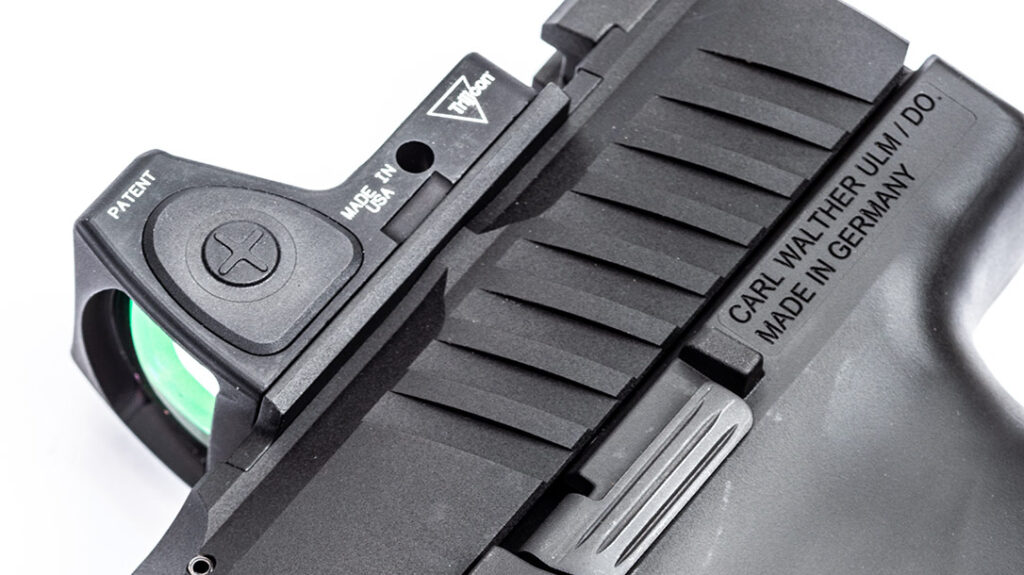
Advertisement — Continue Reading Below
Once at the range, groups were fired from a seated rest. I rested the WMP’s dust cover on a Millett BenchMaster for support while adding pressure to the trigger until the shot broke. Correspondingly, I fired three groups with each ammunition, and the very best group is listed in the accuracy table (below).
I sighted the gun in with Winchester’s 45-grain DynaPoint rounds simply because I had more of those than anything else. They cycled well with the gun and had reasonably good accuracy.
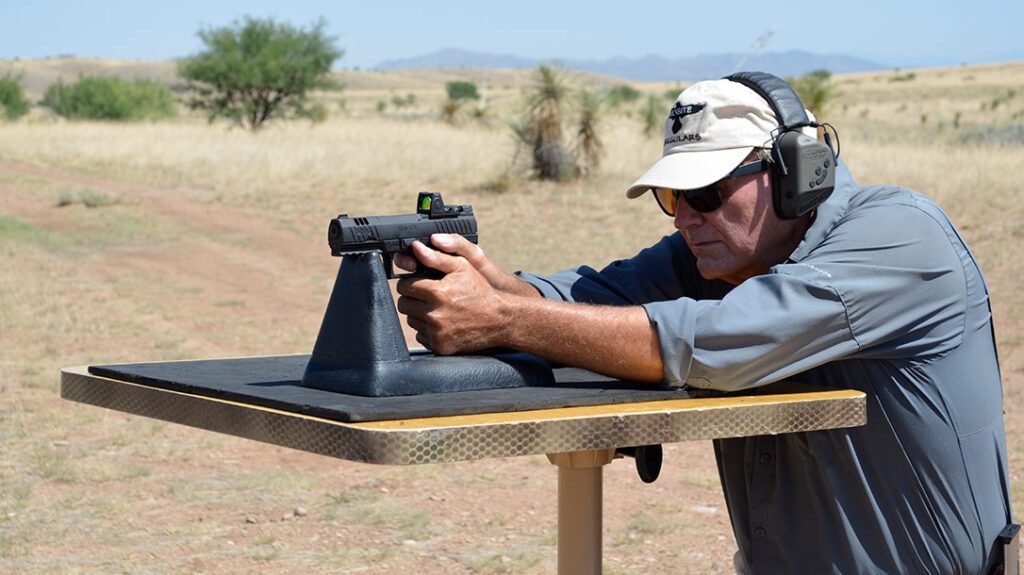
Advertisement — Continue Reading Below
WMP Ammo Warning
The next load I tried was Aguila’s 40-grain Silver Eagle. It is a nice-looking cartridge with a nickeled case and half-jacketed bullet with an exposed lead tip. I placed the RMR’s red dot in the center of the Shoot N C 2-inch-diameter target dot and slowly added pressure to the trigger until…KABOOM!
My face was peppered with unburnt powder, and when I looked at the WMP, its slide was partially locked open. Looking into the ejection port, I could see a casing partially extracted with a new round trying to feed underneath and tying up the slide. Once I removed the magazine and cleared the gun, I could see the round had ruptured at its rim.
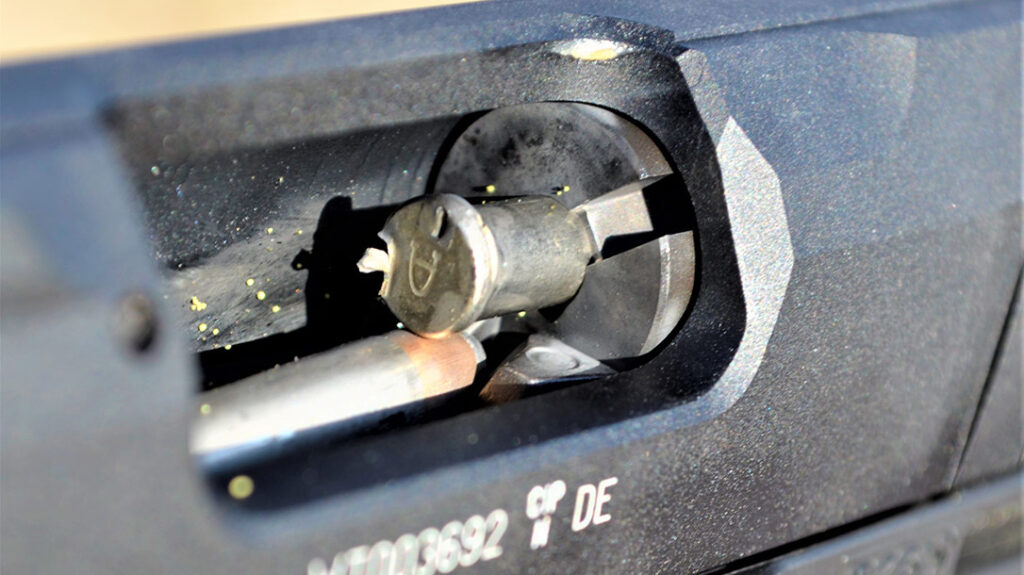
Advertisement — Continue Reading Below
Thinking it was a fluke and being a little bit on the slow side, I inspected the gun and then loaded it again. I took careful aim and fired it again with exactly the same results. After making sure I wasn’t leaking any blood, I took some time to examine the casings and the gun.
I speculate that the nickeled case was somewhat less malleable than an ordinary brass casing. As a result, it did not expand to grasp the chamber’s fluting to delay the opening of the gun. Therefore, the case was not completely supported in the chamber, and this allowed the case to blow out.
Again, this is speculation on my part. However, I did learn afterward that Walther has a page on their website for recommended WMP loads. And more importantly, it lists rounds the company strongly advises against.
The Aguila 40-grain Silver Eagle load was already listed. Let my failure be a lesson on the value of shooting glasses. Had I not been wearing a good pair, I am certain my vision would have been damaged irreparably.
Pet Loads & Parting Pointers
Hornady’s 30-grain V-Max rounds produced the single best five-shot group, measuring just .93 inches at 25 yards. Likewise, CCI’s 40-grain JHPs were no slouch either, placing five shots into a neat 1.14-inch cluster.
Overall, I would have to say that I am extremely impressed with the WMP’s accuracy. The aggregate group size for these three loads was just under 1.25 inches, again at 25 yards. That is phenomenal accuracy for any rimfire pistol.
Field shooting the WMP, I was able to easily doubletap my MGM steel target set out at 15 yards. In fact, it was actually quite easy because the aluminum slide is much lighter than steel. Likewise, with less reciprocating mass, there was less muzzle flip, and recovery of the dot was very quick. Other than the two rounds that ruptured, the WMP proved to be 100 percent reliable.
Walther’s new WMP .22 WMR pistol possesses a great deal of accuracy and flawless reliability. For those looking for more power than a .22 LR with serious capacity, the WMP may just be what you’re looking for.
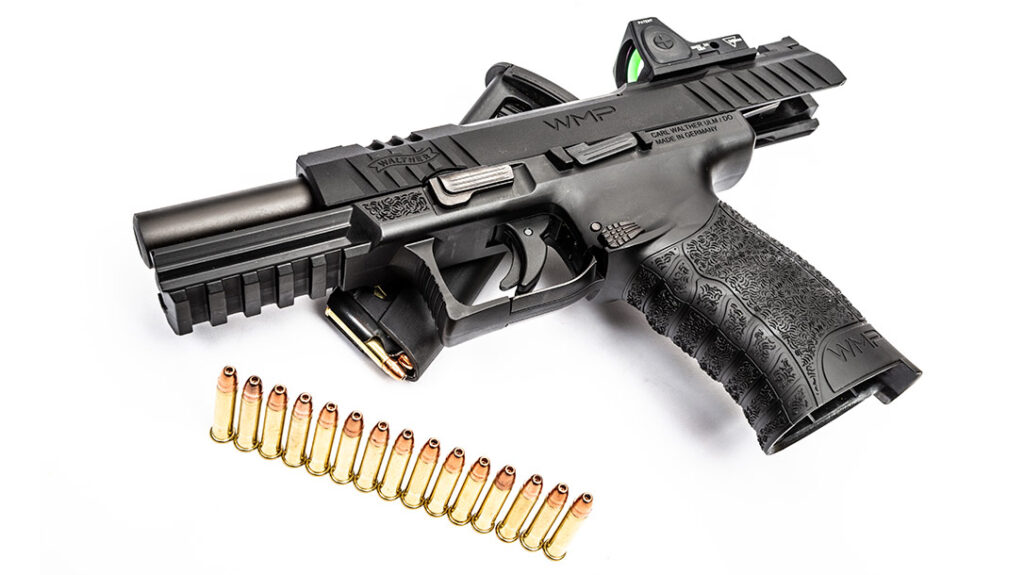
Priced at just $549, the WMP provides customers with great value for the money. Whether it is for target shooting, plinking, or small game hunting, the WMP makes a perfect companion.
For more information, please visit WaltherArms.com.
Walther WMP .22 WMR Specs
| Caliber | .22 WMR |
| Barrel | 4.5 inches |
| Overall Length | 8.2 inches |
| Weight | 28 ounces (empty) |
| Grips | Polymer |
| Sights | Fiber-optic front, serrated rear |
| Action | Semi-auto |
| Finish | Matte black |
| Capacity | 15+1 |
| MSRP | $549.00 |
Performance
| Load | VELOCITY | ACCURACY |
| CCI 22 40 WMR JHP | 1,418 | 1.1 |
| Hornady 30 V-Max 22 Magnum | 1,644 | .93 |
| Winchester 45 DynaPoint 22 WMR | 1,189 | 1.6 |
Bullet weight measured in grains, velocity in feet per second (fps) by chronograph, and accuracy in inches for best five-shot groups at 25 yards.
This article was originally published in the Combat Handguns January/February 2023 issue. Purchase this issue in print or digital at OutdoorGroupStore.com.
